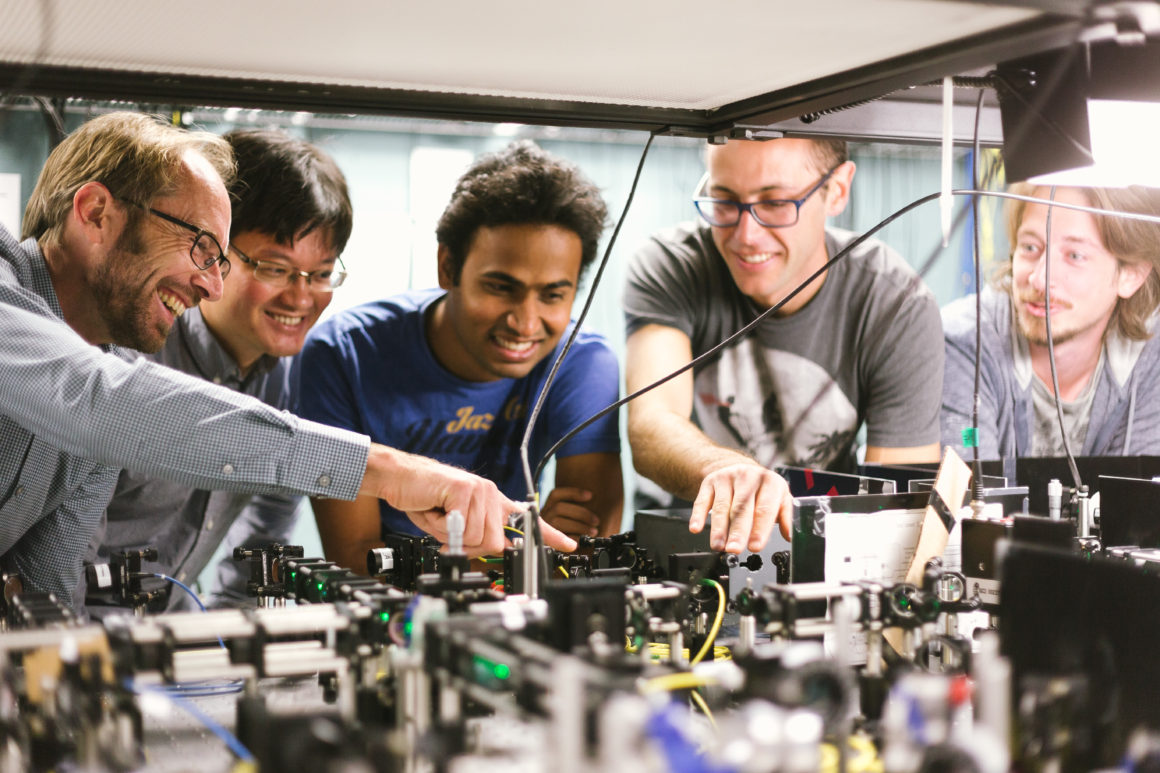
University of Calgary physics professor talks quantum state teleportation, optic fibres and specialized lasers
By Scott Strasser, September 27 2016 —
Wolfgang Tittel is a professor in the University of Calgary’s department of physics and astronomy.
This month, Tittel made international headlines after his experiment on quantum teleportation of photons was published in the academic journal Nature Photonics. The experiment involved sending an entangled photon pair — which are elementary particles of light — from the U of C to Calgary City Hall via a dedicated fibre-optic line.
The experiment garnered international attention as it set a new record for the furthest transfer of a quantum state by teleportation, at more than six kilometres. The Gauntlet had the chance to speak with Tittel about what his experiment means for the future of quantum mechanics.
Gauntlet: To start, can you tell me what exactly your team accomplished?
Wolfgang Tittel: The major thing is that we teleported a quantum state from one location to another one. Teleportation of a quantum state means we can transmit the quantum state from one place to another without any photon or other particle travel. That’s quite remarkable, [as] it is in principle possible to send quantum states by teleportation over arbitrarily long distances. And that has lots of applications.
G: And we’re talking about teleportation of light particles, not physical matter?
T: We’re talking about teleportation of ‘states.’ What we mean by that is a description of how such a photon is prepared. If I had an apple, I could tell you it’s green, it has a certain diameter and that would specify what the apple looks like. When dealing with quantum systems we can also talk about how they’re prepared, but the problem is that in quantum mechanics we cannot know how the state is. We can’t teleport a state. We can transmit the information about how a certain thing is done without actually knowing how it’s done. And that is also quite fascinating.
G: This wasn’t the first experiment of its kind, but it was the first to perform quantum teleportation outside of a controlled lab environment?
T: That’s correct. In the beginning, people wondered if this weird prediction of quantum mechanics — which we call teleportation — indeed exists and could be demonstrated. And that was done for the first time in 1997. Since then people have done it again and again in several laboratories. But until now it was always confined. What we’ve done differently is be able to teleport a quantum state over a distance that is much larger — more than six kilometres in our case — and that we used a standard optical fibre. By that I mean the same fibre that we use when we make a phone call. It’s the same infrastructure that is already there.
G: And in order to conduct the experiment, the team needed to use a specialized laser?
T: We needed a lot of specialized equipment. We needed a laser and we needed a very specific crystal. We shone that laser on that crystal and sometimes by doing so we created two photons that were entangled. That’s another quantum feature that doesn’t exist in our normal, everyday life.
Suppose you have two coins and you flip them at the same time. You will find that they randomly and independently fall on heads or tails. If they were quantum coins, they would either both fall on heads or fall on tails. It turns out this entanglement is very useful and is needed for quantum teleportation.
We created these two photons at the U of C in my lab and we sent one of them to City Hall using a standard optic fibre. There it met another photon that was created in Manchester, a neighbourhood south of City Hall. They met at City Hall, we made a measurement of these photons and then told the lab the measurement was a success. We saw the state from the photon we originally created at Manchester was teleported from City Hall into our lab here, onto the remaining photon.
G: What else can you tell me about the equipment needed for this experiment?
T: We needed to use detectors that were sensitive to single photons. These are detectors that detect tiny amounts of light, and these are detectors that need to be cooled down to very close to absolute zero — close to -273 degrees celsius — and that requires a cryostatic cooler.
G: How are the experiment’s results significant for quantum mechanics?
T: It’s interesting to see that this prediction of disembodied transfer of information can go beyond the lab scale. From a fundamental point of view it’s fascinating to see quantum mechanics acting on such a scale.
From an application point of view, if you can distribute quantum states through teleportation and over arbitrarily long distances, you can distribute secret keys that you can use for encryption. We all know encryption is important for today’s society. If you go to an ATM, you [type] in your code and have to make sure when the machine communicates with your bank, nobody else can read that code. The code has to be encrypted when the machine communicates with the bank. We need keys to do this. Quantum key distribution allows us to distribute keys in a way that allow us to verify if the keys have been eavesdropped on or not. That’s a step up from how it’s done nowadays.
Edited for clarity and brevity
